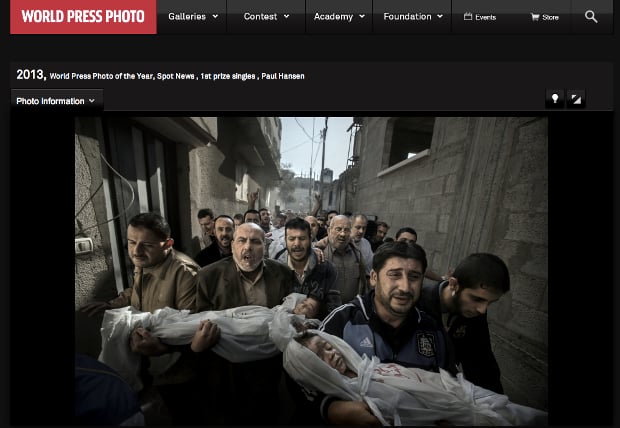This Year’s World Press Photo: Conflicts of Interest and 8% of Finalists Disqualified
![]()
After last year’s controversy over the winner of the World Press Photo of the Year, all eyes were on the organization as they announced the winner of this year’s contest.
But while general consensus from the photo community seems to be that John Stanmeyer deserved this year’s award, talk of conflicts of interest and the high percentage of disqualifications due to photo manipulation are plaguing the contest.
The main controversy swirling around the contest has to do with a conflict of interest between the winner Stanmeyer and the chair of this year’s jury, Gary Knight. You see, both gentlemen are founders and shareholders of the limited company VII photo.
Knight told The New York Times that he actually tried to be removed from the judging process where Stanmeyer’s image was concerned, but WPP rules wouldn’t allow for it. And even though he assures the paper the he was “a hindrance for John getting the award, not a help,” much of the photo community is responding with skepticism.
![]()
But this conflict of interests isn’t the only news to come out of this year’s WPP competition. A particularly troubling statistic has attracted some serious attention in the days since the winner was announced.
As it turns out, those stricter rules against photo manipulation that we told you about a few months back claimed a significant number of ‘victims’ this year. How significant? A whopping 8% of finalists were disqualified.
According to the Times, an outside expert was brought in to examine the RAW files, and found that 8% were “materially and substantially changed.” A finding that Knight said caused him “real horror and considerable pain because some of the changes were materially trivial but they were ethically significant.”

Finally, Knight also made some statements while speaking to the British Journal of Photography that some say belittle the state of photography. He said he detected a “perceived lack of depth” in the stories submitted and lamented that, while the winners were great, “there was material gap in the way the world was covered and in the quantity and quality of the strong stories that we were presented with.”
This, opines Knight, is due to the few big players left who can provide photographers with adequate resources. “I’m seeing in these awards,” says Knight, “the real-life consequence of the lack of resources that photographers have to go out into the world and cover stories with any depth at all.”
Conflicts of interest, ethically significant post-processing leading to 8% of finalists disqualified and comments that make it seem as if World Press Photo believes photography as a whole might be going down hill as the major agencies become fewer and farther between… probably not the legacy this year’s competition wants to leave in its wake.
What’s your take on all of this? Drop us a line in the comments and let us know. And if you would like to read more about any of these issue, be sure to head over to the duckrabbit blog, New York Times Lens Blog and British Journal of Photography and read their phenomenal articles on the subject.
(via The New York Times and duckrabbit blog)